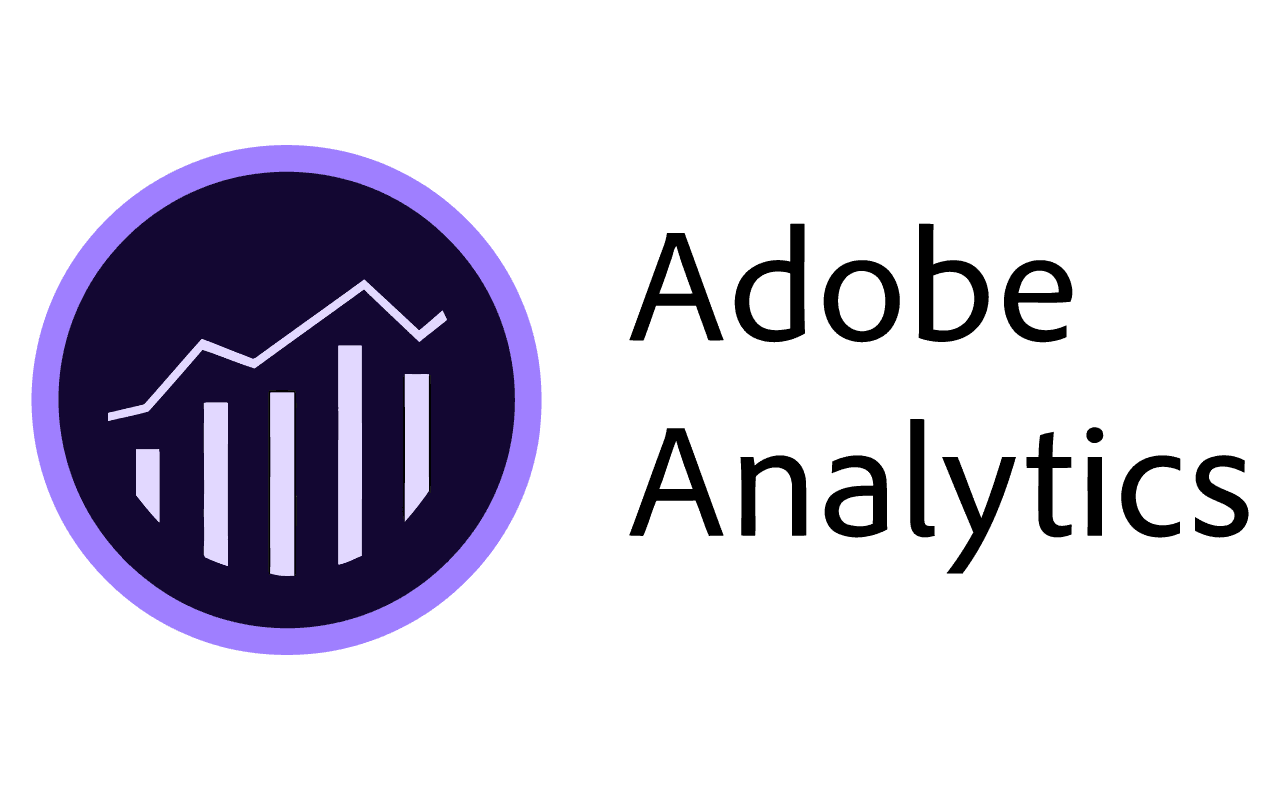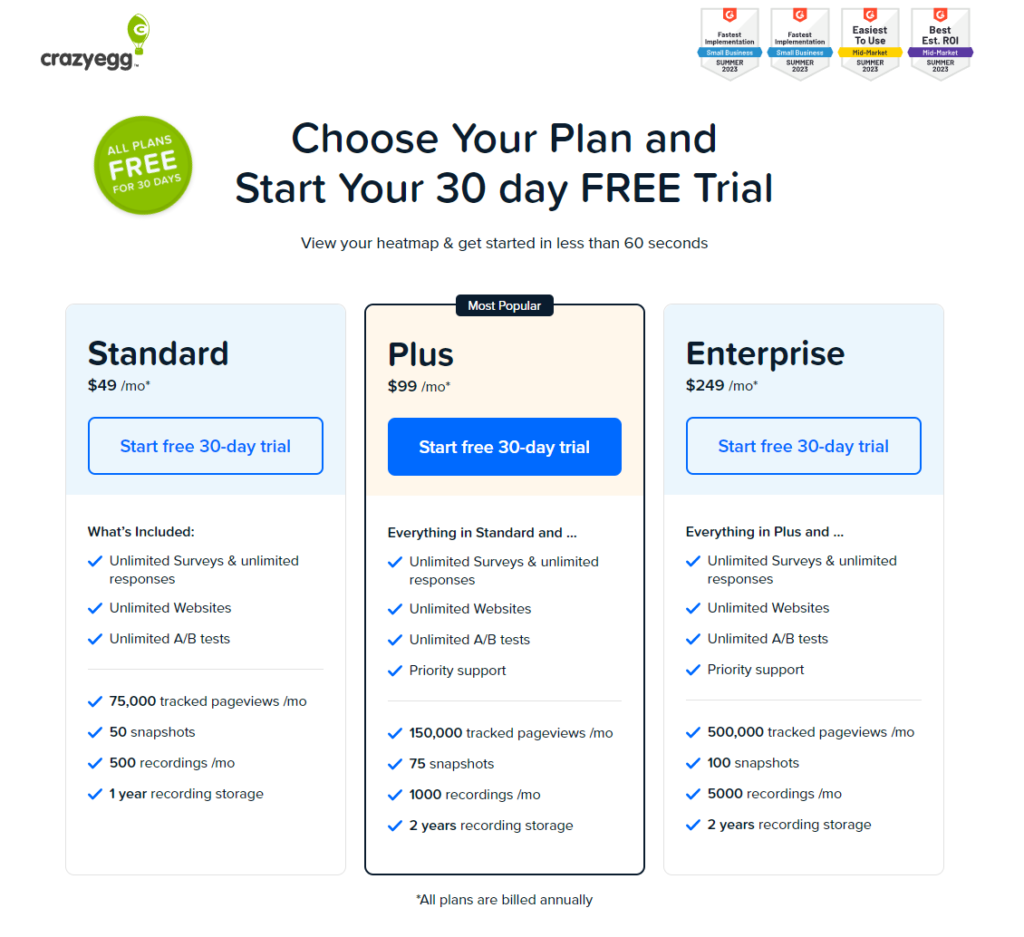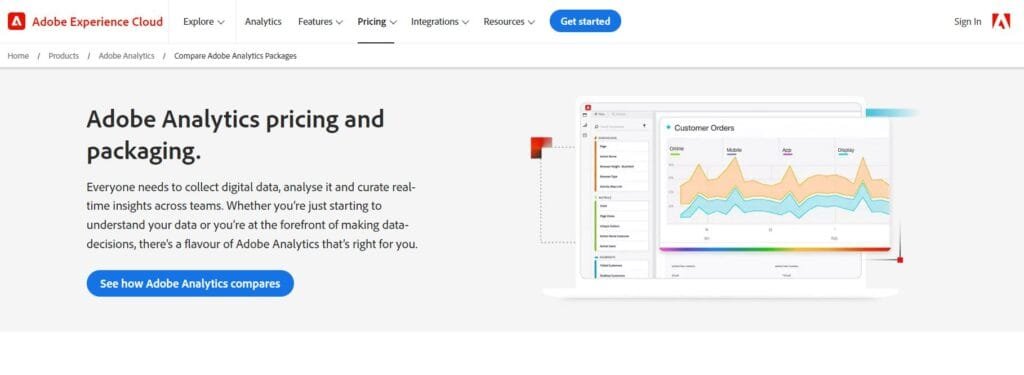In the sprawling digital landscape, where data is the compass that guides business decisions, choosing the right analytics tool is paramount. Enter Crazy Egg and Adobe Analytics, two titans in the realm of digital analytics, each offering unique insights to steer your strategy. Whether you’re charting the user journey on a burgeoning blog or navigating the complex ecosystems of a multinational website, the decision between Crazy Egg and Adobe Analytics could be the beacon that lights your path to success.
Crazy Egg | Adobe Analytics |
|---|---|
| G2 Score – 4.2 out of 5 stars | G2 Score – 4.1 out of 5 stars |
| TrustRadius Score – 7.6/10 | TrustRadius Score – 8.2/10 |
User Behavior Insights
At the heart of any analytics tool is its ability to reveal how users interact with your digital presence. Understanding user behavior is crucial for optimizing user experience, improving conversion rates, and ultimately, driving business growth. Here’s how Crazy Egg and Adobe Analytics stack up in providing actionable user behavior insights.
Crazy Egg:
Renowned for its visual analytics capabilities, Crazy Egg offers a suite of tools that allow you to see exactly how visitors are engaging with your site. Heatmaps show you where clicks are happening, scroll maps reveal how far down people are reading, and session recordings play back the actual journeys users take. This visual approach makes it incredibly straightforward to identify areas of your site that are performing well and those that might be causing confusion or disengagement.
Crazy Egg’s tools are designed to be intuitive, providing immediate, actionable insights that are especially valuable for small to medium-sized businesses focused on optimizing their websites for better user engagement and conversion rates.
Adobe Analytics:
Adobe Analytics takes a more comprehensive and granular approach to user behavior insights. As part of the Adobe Experience Cloud, it offers robust capabilities for analyzing not just how users interact with your website but also how they engage across all your digital channels. Adobe Analytics excels in segmentation, allowing you to drill down into specific user segments for detailed analysis.
It also provides powerful predictive analytics capabilities and integration with a wide range of marketing tools, making it possible to not just understand but anticipate user needs and behaviors. Adobe Analytics is suited for larger enterprises or businesses with complex digital ecosystems that require in-depth, cross-channel analytics to inform their digital strategy.
Integration Capabilities
A tool’s capacity to integrate with various digital marketing platforms, CRM systems, content management systems, and other analytics tools can dramatically amplify its value, offering a more holistic view of customer behavior and marketing performance. Here’s how Crazy Egg and Adobe Analytics perform in terms of integration capabilities.
Crazy Egg:
Crazy Egg’s strength lies in its simplicity and focused approach to analytics, primarily centering on website optimization through visual insights. Its integration capabilities are straightforward, emphasizing easy embedment into websites via a snippet of JavaScript. This ensures that Crazy Egg can be quickly set up on most websites without extensive technical support. However, when it comes to broader marketing ecosystem integrations, such as direct connections with CRM systems or deep analytics platforms, Crazy Egg’s capabilities are more limited.
The tool is designed to offer valuable insights into website user behavior, making it a strong standalone option for businesses focused on enhancing their site’s user experience but may require additional tools or manual efforts to integrate insights into a broader marketing strategy.
Adobe Analytics:
As a component of the Adobe Experience Cloud, Adobe Analytics excels in integration capabilities. It’s built to seamlessly interact not just with other Adobe products but also with a wide range of external systems and platforms. This includes everything from CRM systems like Salesforce to advertising platforms and beyond. Adobe Analytics’ robust API supports custom integrations, making it highly adaptable to complex digital ecosystems. For businesses that rely on a diverse set of tools and platforms to execute their marketing strategies, Adobe Analytics offers the flexibility and depth needed to consolidate data across these systems, providing a comprehensive, unified view of marketing performance and user behavior.
In assessing Integration Capabilities, Adobe Analytics stands out for its robustness and versatility, catering to enterprises and businesses with complex digital landscapes seeking to integrate deep, cross-channel analytics into their strategy. Crazy Egg, with its ease of setup and focused analytics offering, provides valuable insights for businesses concentrated on website optimization without the need for extensive system integrations.

Related: Check out our free SEO suite

Data Analysis and Reporting Capabilities
The essence of leveraging an analytics tool lies in its capacity to dissect vast amounts of data and present it in a way that’s insightful and actionable. Here’s how Crazy Egg and Adobe Analytics stack up in their ability to analyze data and deliver meaningful reports.
Crazy Egg:
Known for its user-friendly approach, Crazy Egg specializes in visual analytics, offering tools like heatmaps, scroll maps, and session recordings to provide a clear picture of how users interact with your site. This emphasis on visual data presentation makes it easy for users to identify patterns, understand user behavior, and pinpoint areas for improvement without deep diving into complex data sets. Crazy Egg’s reporting capabilities are geared towards delivering straightforward, actionable insights, allowing for quick decision-making and implementation. However, for businesses seeking to conduct more detailed data analysis or needing advanced reporting features that cover broader digital marketing metrics, Crazy Egg’s capabilities might feel limited.
Adobe Analytics:
Offering a comprehensive suite of analytics tools, Adobe Analytics stands out for its advanced data analysis and reporting capabilities. It goes beyond basic website analytics to provide detailed insights into customer journeys across multiple channels, leveraging a robust segmentation engine and sophisticated predictive analytics to deliver deep, actionable insights. Adobe Analytics allows for the creation of custom reports and dashboards tailored to specific business needs, offering flexibility in how data is analyzed and presented. Its capacity to handle large data volumes and integrate data from various sources makes it a powerful tool for enterprises and businesses looking for in-depth analysis across all aspects of their digital presence.
In the realm of Data Analysis and Reporting Capabilities, Adobe Analytics offers a more advanced solution suited for businesses that require detailed, multi-faceted insights to inform their strategy across various digital channels. Crazy Egg, with its focus on simplicity and immediate, visual insights, is ideal for users looking to quickly identify and act on opportunities to enhance their website’s user experience.
Ease of Use and Learning Curve
The best analytics tools strike a balance between offering deep insights and being accessible to users across different skill levels. A tool’s ease of use and the steepness of its learning curve can greatly affect how quickly a team can leverage it to make data-driven decisions. Here’s how Crazy Egg and Adobe Analytics measure up in terms of user-friendliness and the learning curve.
Crazy Egg:
Crazy Egg is renowned for its intuitive design and straightforward approach to analytics. It simplifies the process of understanding user behavior on a website with visual tools like heatmaps, scroll maps, and session recordings. This simplicity extends to its setup process—implementing Crazy Egg on a website is as easy as adding a snippet of code. The platform’s user interface is designed to be navigable and understandable, even for those with minimal analytics experience, making it a great tool for businesses looking for quick insights to optimize their websites without a significant time investment in training.
Adobe Analytics:
Adobe Analytics offers a comprehensive suite of analytics features designed for deep data analysis across multiple channels. With its advanced capabilities comes a more complex interface and a steeper learning curve, especially for users new to analytics or those accustomed to more straightforward tools. Adobe Analytics provides extensive documentation, training materials, and support to help users navigate its features, but becoming proficient can require a significant investment of time and resources. For large enterprises and organizations with dedicated analytics teams, this investment is often justified by the depth and breadth of insights Adobe Analytics can provide.
Customer Support and Community Engagement
The availability of responsive customer support and an engaged user community are essential components that can significantly impact the effectiveness of an analytics tool. Here’s how Crazy Egg and Adobe Analytics stack up in these areas.
Crazy Egg:
Crazy Egg provides its users with a variety of support options designed to help them get the most out of the platform. This includes a comprehensive knowledge base filled with articles, video tutorials, and guides that cover everything from basic setup to advanced features. For direct assistance, Crazy Egg offers email support, ensuring users can receive help for more specific issues or inquiries.
While it may not have the broadest range of support channels, the quality of the resources available is generally high, enabling users to resolve issues and learn at their own pace. The community around Crazy Egg, though not as extensive as some larger platforms, still offers forums and social media groups where users can share tips, insights, and best practices.
Adobe Analytics:
Given its position as a leading analytics solution for enterprises, Adobe Analytics boasts a comprehensive support ecosystem. This includes 24/7 access to customer support through various channels, including phone, chat, and email, for users on certain plans. Adobe also provides an extensive library of learning materials, such as documentation, tutorials, and forums, available through the Adobe Experience League.
Beyond this, the Adobe Analytics community is vast and active, with user groups, conferences, and online forums where professionals share insights, challenges, and solutions. This robust support and community engagement make Adobe Analytics a platform that not only addresses user issues effectively but also fosters continuous learning and professional growth.
In comparing Customer Support and Community Engagement, Adobe Analytics offers a more extensive support network and a larger, more active community, reflecting its enterprise-level positioning and broader user base. Crazy Egg, while providing solid support resources suitable for its user-friendly platform, has a smaller community footprint, which aligns with its focus on simplicity and ease of use.
Pricing
Crazy Egg:

Adobe Analytics:

Conclusion
In conclusion, when comparing Crazy Egg and Adobe Analytics, the choice hinges on your specific analytics needs, organizational size, and resource availability. Crazy Egg is best suited for businesses seeking straightforward, visual insights to quickly optimize website user experience, making it ideal for small to medium-sized enterprises. Adobe Analytics, with its comprehensive and granular analysis capabilities, is tailored for larger organizations or those with complex digital ecosystems, requiring deep, cross-channel insights for strategic decision-making.
Selecting between these tools depends on matching their strengths with your goals—whether you need to enhance your website with actionable insights or seek a robust analytics solution for broad, strategic planning across multiple digital platforms.
Read Next:
- ConvertKit vs Moosend: The Best Email Marketing Tool for 2024
- ActiveCampaign vs EmailOctopus: The Best Email Marketing Tool for 2024
- AWeber vs EmailOctopus: The Best Email Marketing Tool
- ConvertKit vs Mailjet: The Best Email Marketing Tool for 2024
- ActiveCampaign vs Campaigner: The Best Email Marketing Tool for 2024





















Comments are closed.